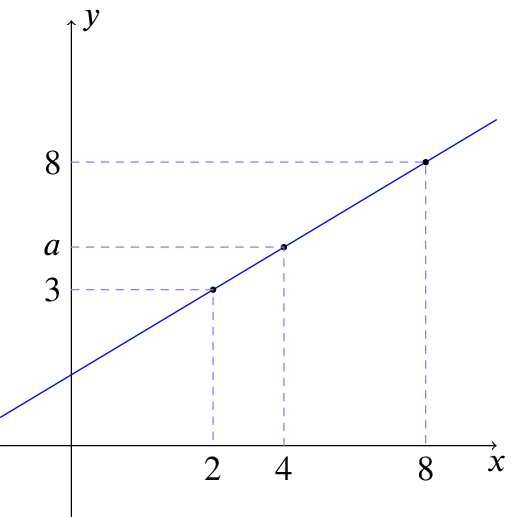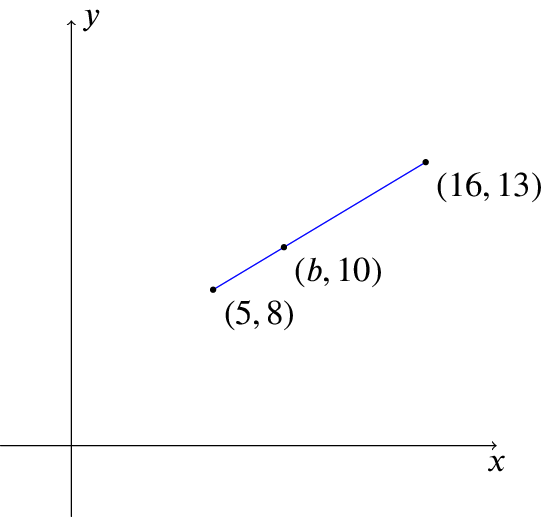Here is a graph showing a straight line. It is not drawn accurately.
The points \((2,3)\) and \((8,8)\) lie on the line.
Another point, \((4,a)\), also lies on the line. Can you work out the value of \(a\)?
How many different ways can you find to do this?

This time, the \(x\)-coordinate of one of the points is missing—can you work it out?

Did all of your approaches from question 1 work, or did some not? Or perhaps they worked with some modification?
Can you find any new ways to do this question which are different from your methods for question 1?
This time, you might find it helpful to draw your own sketches. Give your answers to 1 decimal place.
The point \((7.3, c)\) lies on the straight line joining \((4.1, 37)\) and \((8.9, 63)\). Find \(c\).
The point \((d, 47.5)\) lies on the straight line joining \((15.05, 42)\) and \((17.55, 56)\). Find \(d\).
The point \((12, e)\) lies on the straight line joining \((8, 20)\) and \((17, 1)\). Find \(e\).

